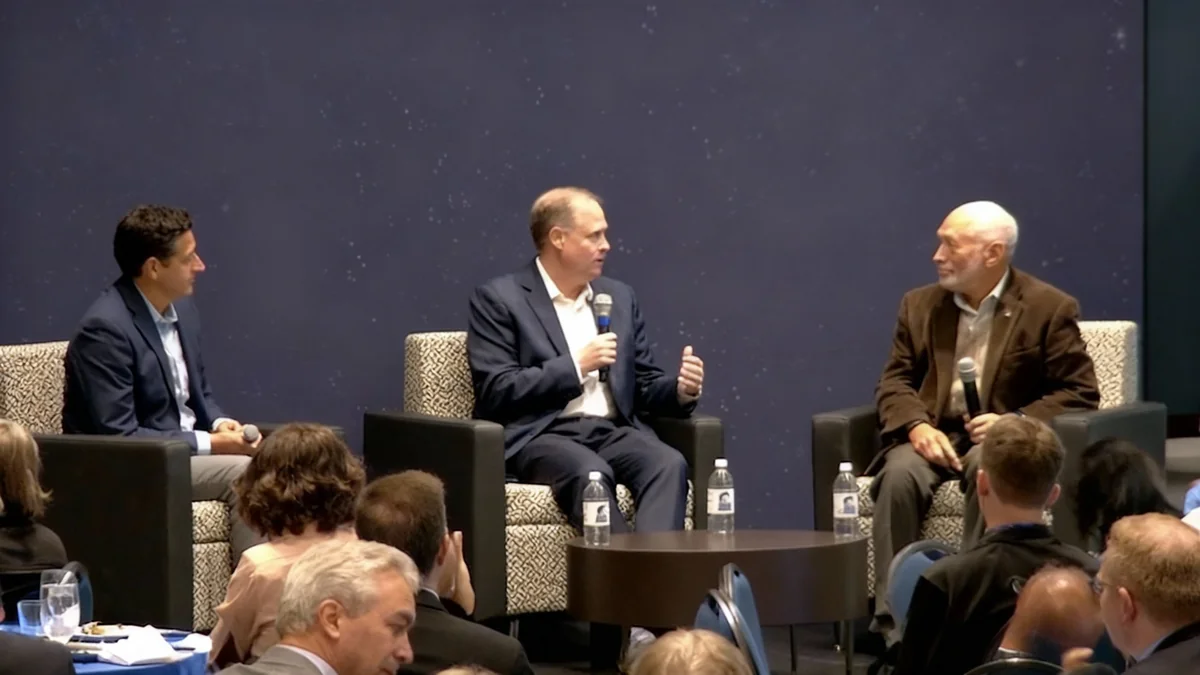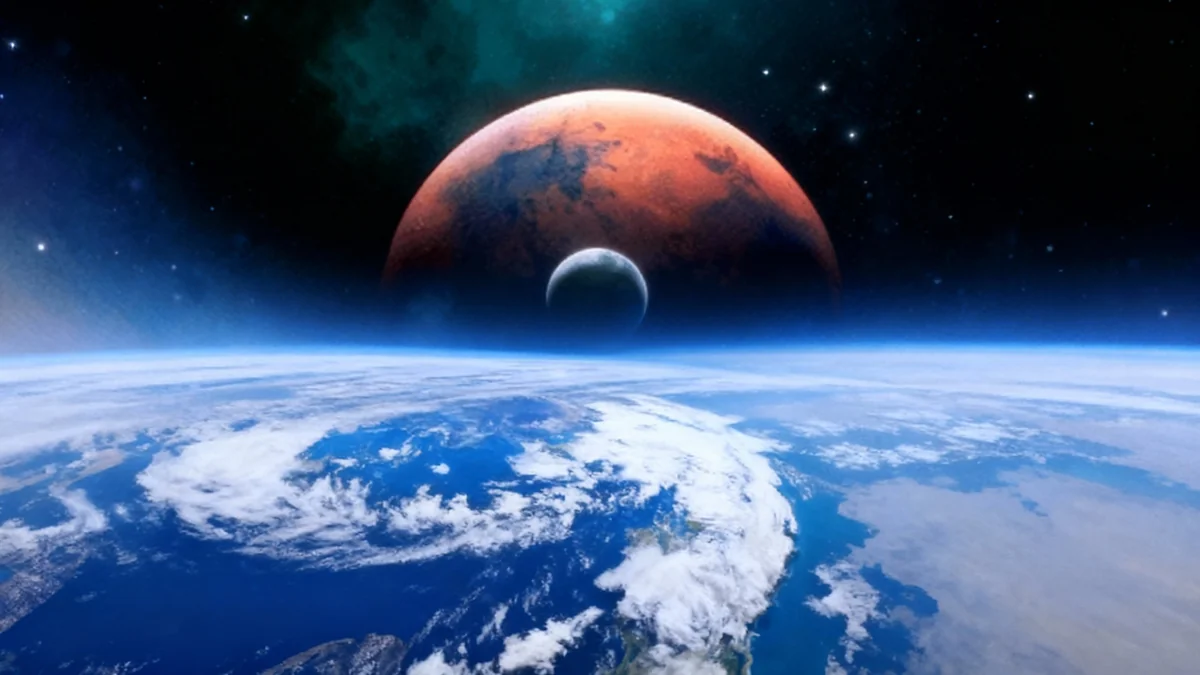A public dispute between SpaceX CEO Elon Musk and NASA's acting administrator has highlighted significant challenges facing the Artemis program, America's initiative to return astronauts to the moon. With SpaceX's Starship lander behind schedule, NASA is now actively seeking alternative and faster approaches, opening the door for competitors and igniting a fierce debate over the best way to win the new space race against China.
Key Takeaways
- NASA is reopening its lunar lander contract due to delays with SpaceX's Starship, creating new opportunities for competitors.
- The primary debate centers on the complexity of SpaceX's Starship, which requires numerous in-orbit refueling missions—a technology not yet proven.
- Blue Origin is developing a smaller, more conventional lander, while a Lockheed Martin-led coalition proposes using existing, off-the-shelf hardware for a faster solution.
- The pressure is mounting as the United States aims to land astronauts on the moon before China achieves the same goal, likely before 2030.
A High-Stakes Disagreement
The simmering tensions over the Artemis program's progress boiled over in late October. During a television appearance, Sean Duffy, the acting administrator of NASA, announced his intention to open the lunar lander contract to competition, directly addressing the ongoing delays with SpaceX.
"We’re not going to wait for one company," Duffy stated, emphasizing the urgency of the situation. "We’re going to push this forward and win the second space race against the Chinese."
In 2021, NASA awarded SpaceX a $2.89 billion contract to develop a lunar lander based on its massive Starship rocket for the Artemis III and IV missions. However, repeated development setbacks have put the timeline in jeopardy.
Elon Musk responded swiftly on X, the social media platform he owns, with a series of posts criticizing Duffy's leadership and technical understanding. Despite the online rhetoric, the core issue remains: the chosen technology for landing on the moon is facing fundamental questions about its feasibility and timeline.
The New Space Race
Unlike the Cold War-era competition with the Soviet Union, today's race to the moon is defined by a geopolitical rivalry with China and a complex interplay between government agencies and private aerospace companies. The goal is not just to plant a flag, but to establish a sustainable presence that could unlock future scientific and economic opportunities.
The Trouble with Starship
At the heart of the debate is the design of the Starship lander itself. The vehicle is enormous, standing 165 feet tall, a stark contrast to the Apollo-era Lunar Module, which was just under 23 feet tall. The size is a byproduct of its multi-purpose design, intended for missions to Earth orbit and eventually Mars, capable of carrying up to 100 people.
Former NASA Administrator Jim Bridenstine described the architecture as "extraordinarily complex" during Senate testimony in September. "It, quite frankly, doesn’t make a lot of sense if you're trying to go first to the moon, this time to beat China," he said.
The Refueling Hurdle
The most significant technical challenge is fuel. Starship requires so much supercold liquid methane and liquid oxygen that it cannot launch directly to the moon with a full tank. The plan involves parking the vehicle in Earth orbit and refueling it with a series of tanker flights.
How many flights are needed is a point of contention. Musk has suggested a maximum of eight, but some industry experts believe the number could be much higher.
"Elon says it’s eight to 10 refueling missions. Most professionals who look at it say it’s 20," said Mike Griffin, who served as NASA administrator from 2005 to 2009.
The problem is compounded by fuel "boil-off." The cryogenic propellants must be kept at extremely low temperatures (below -259°F). In orbit, they will warm and turn to gas, meaning fuel is constantly being lost. This creates what Griffin calls a "tail chase where you can’t refuel it fast enough." Critically, the technology for in-orbit cryogenic refueling on this scale has not yet been demonstrated.
A Tale of Two Landers: Apollo vs. Starship
- Apollo Lunar Module: Stood 23 feet tall, weighed 32,500 pounds, and used a simple nine-rung ladder for astronauts.
- Starship Lander: Stands 165 feet tall, weighs over 200,000 pounds, and will require an elevator to lower astronauts to the lunar surface.
The Competitors Emerge
With the door now open, other companies are positioning themselves to offer alternatives. NASA has already signaled its interest in a multi-provider approach to ensure redundancy and promote competition.
Blue Origin's Blue Moon
In 2023, NASA awarded a second contract worth $3.4 billion to Jeff Bezos's company, Blue Origin, to develop its Blue Moon lander for later Artemis missions. At 52 feet tall, Blue Moon is significantly smaller than Starship but can support four astronauts for up to 30 days.
While it also requires refueling, the plan is to do so in lunar orbit, which could simplify logistics. Blue Origin is also actively working with NASA to develop "zero-boiloff" tank technology that could solve the propellant loss problem by actively cooling the fuel.
Lockheed Martin's Pragmatic Approach
A third, more recent proposal is gaining attention. Lockheed Martin, the prime contractor for the Orion crew capsule, is assembling a coalition of industry players to build a lander using existing, flight-proven components.
This design philosophy, which Lockheed calls "design for inventory," would return to the two-stage model of the Apollo era. A descent stage would land the vehicle, and a separate, lighter ascent stage would return the crew to orbit, leaving the landing hardware behind on the moon.
"We want to use stuff from the Orion pantry that already exists," explained Rob Chambers, Lockheed’s senior director for human spaceflight strategy. The plan involves sourcing parts that are already built, potentially even taking them from unlaunched spacecraft, to accelerate the timeline dramatically. This lander would also use simpler hypergolic fuels that do not require cryogenic storage, eliminating the boil-off issue entirely.
An Urgent Deadline
In response to the growing pressure, NASA has formally requested accelerated plans from both SpaceX and Blue Origin. The agency also issued a broad request for information to the entire commercial space industry, seeking innovative ideas to increase the frequency of moon missions.
The developments of the coming months will be critical. The competition between SpaceX's ambitious vision, Blue Origin's methodical development, and Lockheed Martin's pragmatic proposal will determine not only how, but when, humanity returns to the lunar surface. For NASA, the challenge is to manage this complex industrial landscape while keeping its eyes fixed on the ultimate prize: a successful lunar landing before a rival nation gets there first.





